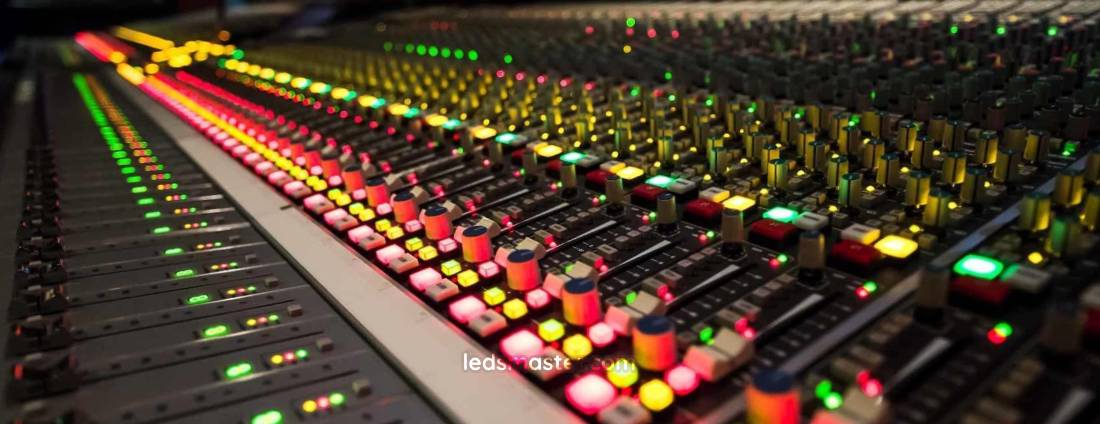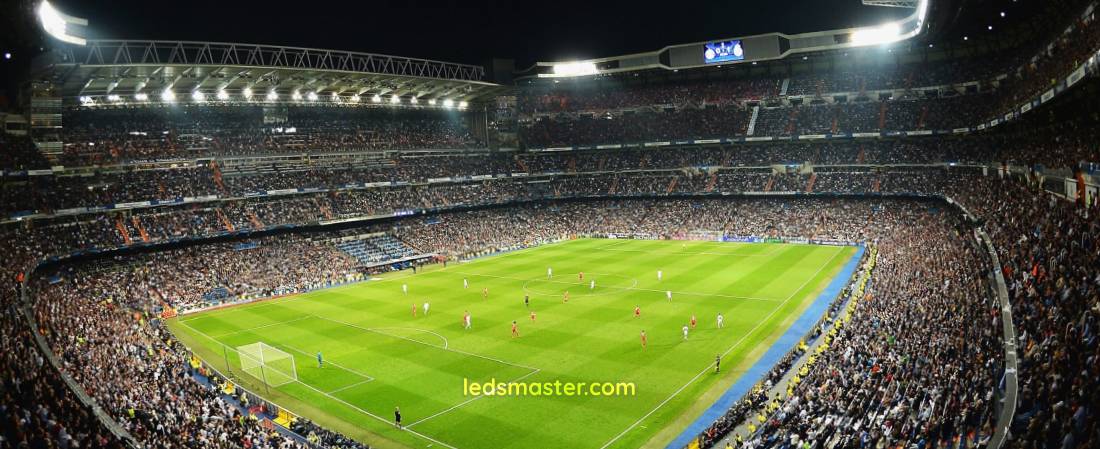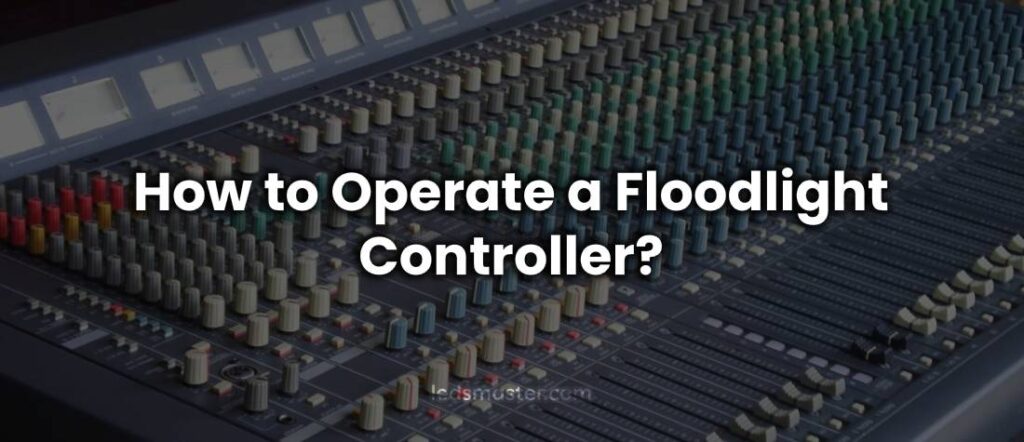Floodlight controllers are devices designed to manage and control the operation of floodlights. These lights are often used for large outdoor areas such as sports fields, stadiums, parking lots, and industrial sites. With the right controller, the lights can be programmed to switch on and off at specific times, dim, or adjust based on the surrounding environment, offering energy savings and improved functionality.
Table of Contents
ToggleCost of Setting Up a Floodlight Controller
| Cost Category | Range of Costs |
|---|---|
| Basic Floodlight Controller | $50 to $200 |
| Advanced Floodlight Controller | $500 to $2,000+ |
| Installation Cost | $200 to $800 (depending on complexity) |
| Additional Materials (e.g., wiring, connectors) | $100 to $1,000+ |
| Electricity Costs (monthly) | $20 to $200 (depending on size and frequency of use) |
| Routine Maintenance | $50 to $150 per service visit |
| Sensor Cleaning & Maintenance | $25 to $75 per service visit |
| Floodlight Cleaning & Maintenance | $30 to $100 per light |
| Minor Repairs | $50 to $200 (simple wiring issues, minor malfunctions) |
| Major Repairs (e.g., controller, sensor replacement) | $200 to $600 |
| Professional Repair Service | $100 to $300 per service visit (depending on location) |
| Emergency Repairs | $50 to $150 premium (for urgent visits) |
| Full System Replacement | $500 to $2,000+ (if the entire system needs to be replaced) |
| Repair Technician Hourly Rate | $150 to $500 (for complex or smart systems) |
Basic floodlight controllers with simple on/off functions are more affordable, while advanced models with dimming, motion detection, and remote monitoring cost more.
A basic controller costs $50–$200, with installation adding $200–$800. Advanced controllers can exceed $500, reaching $1,000–$2,000+ for high-end models with smart integrations. Professional wiring and configuration may add $100–$300.
Additional expenses, like new floodlights, wiring, or mounting hardware, range from $100 to $1,000+. Electricity costs vary from $20 to $200 per month, with efficient systems reducing usage. Maintenance, including cleaning and repairs, costs $100–$500 annually but can be offset by energy savings.

Maintenance and Repair Fees
Maintaining and repairing a floodlight controller system is an ongoing process that ensures the system continues to operate efficiently. Although these systems are designed to be durable and long-lasting, periodic maintenance and repairs may be needed to keep them running at their best.
Regular Maintenance
One of the key tasks is inspecting the electrical connections and wiring. Over time, wires may loosen, corrode, or degrade, which can impact the controller’s functionality. A routine inspection of the wiring system, along with checking all connections, can prevent issues before they become serious problems. On average, this kind of inspection and maintenance work may cost between $50 and $150 per visit, depending on the complexity and scale of the system.
For systems that include motion sensors or other integrated features, periodic cleaning of the sensors is advised to prevent dust or debris from building up. Over time, dirt can obstruct the sensors, diminishing their ability to detect movement or changes in the environment. Cleaning and checking the sensors can cost between $25 and $75 per service call. Additionally, the floodlights themselves should be cleaned regularly to maintain optimal brightness and performance, especially in environments that accumulate dust, dirt, or other contaminants. Cleaning and maintaining floodlights can cost between $30 and $100 per light, depending on the location and type of light.
Repair Costs
The need for repairs may arise when the system malfunctions or when certain components begin to wear out. The cost of repairing a floodlight controller will depend on the nature of the issue, the component that requires replacement, and whether a professional is needed for the repair. Minor problems, such as loose wiring or simple malfunctions, may be repaired for a relatively low cost, typically ranging from $50 to $200. These repairs can often be completed with some basic electrical knowledge or by a technician who offers affordable repair services.
More complex issues, such as a damaged controller unit, a malfunctioning sensor, or a defective power supply, may require more extensive repairs or even the replacement of parts. For example, replacing a faulty sensor or controller unit can cost anywhere between $200 and $600, depending on the type of system. For advanced floodlight controller systems that use smart technology, the replacement of more sophisticated components, such as circuit boards or wireless communication modules, could result in repair costs as high as $800 or more.
If the system is under warranty, the cost of repairs may be covered, reducing out-of-pocket expenses. However, for older systems or ones no longer under warranty, repair costs can be significant. In some cases, it may even be more cost-effective to replace a malfunctioning system rather than repair it, especially if parts are difficult to obtain or the system is outdated.
Repair costs are also influenced by the location of the service provider. Technicians in urban areas tend to charge higher rates, with service calls ranging from $100 to $300 for a single visit, while in rural or remote areas, the cost may be lower. Additionally, emergency repair services or urgent visits may come with a premium of $50 to $150, further adding to the cost.
In some cases, the failure of a component might require the entire controller to be replaced. This can be especially true if the issue involves the central processing unit or a specialized component that is beyond repair. Replacing the entire system can cost upwards of $500 to $2,000, depending on the complexity and scale of the floodlight setup.
For floodlight controllers with advanced features like integration with smart home systems or remote monitoring, repairs might require specialized knowledge and tools. Technicians familiar with these advanced systems may charge more, with service rates ranging from $150 to $500 per hour, depending on the region and the expertise required.

Basic Functions of a Floodlight Controller
Floodlight controllers range from basic on/off models to more advanced systems with additional features. These systems automate the operation of floodlights, improving energy efficiency and convenience.
Simple On/Off Scheduling
Basic floodlight controllers offer simple scheduling, turning lights on at dusk and off at dawn. This is useful for small areas where precise control isn’t needed, such as residential driveways or small parking lots. It’s an easy way to ensure floodlights are on only when necessary.
Adaptive Lighting Based on Time and Conditions
Advanced controllers adjust light intensity based on factors like time of day, weather, and activity levels. If it gets darker earlier than expected, the lights can brighten automatically. During daylight or when no activity is detected, the system reduces brightness or turns the lights off, saving energy and extending bulb life.
Integration with Smart Technologies
Some floodlight controllers can integrate with smart devices like motion detectors and weather stations. Motion sensors trigger lights when movement is detected, and smart integration allows users to control settings remotely via mobile apps or voice assistants. This helps optimize energy use and provides greater flexibility.
Energy Efficiency and Lifespan Management
By automating lighting and adjusting for external conditions, floodlight controllers minimize energy waste, lowering electricity costs and extending the lifespan of the floodlights. This makes them a cost-effective solution for both residential and commercial applications.
Advanced Features of Floodlight Controllers
Floodlight controllers have evolved significantly over time, with new and advanced features that provide greater control and versatility. These additional functionalities help users optimize lighting performance, improve efficiency, and customize the system to meet specific needs.
Dimming and Brightness Control
Many floodlight controllers come with the ability to adjust the brightness of the lights, a feature that is particularly useful in areas where varying levels of lighting are needed throughout the day or night. Dimming can be controlled based on time schedules, ambient light conditions, or specific needs. For instance, sports facilities can use dimming features during practice sessions when full intensity lighting is not necessary, thus saving on energy costs. Similarly, floodlights in parking lots can be dimmed when no vehicles are present, helping to cut down on electricity consumption.
Motion Detection Integration
Some floodlight controllers have motion detection built in or allow integration with external motion sensors. These sensors detect movement in the area and turn the floodlights on only when motion is detected. This function is especially useful in large outdoor spaces such as parking lots, warehouses, and industrial sites. In these environments, motion sensors prevent the floodlights from staying on when no one is around, saving energy and reducing costs.
Weather Condition Adjustments
A more advanced feature in floodlight controllers is the ability to adjust the lighting based on weather conditions. These controllers can be linked to weather monitoring systems that track environmental factors such as fog, rain, or snowfall. When weather conditions require more visibility, such as during foggy weather, the controller can automatically increase the intensity of the floodlights to ensure adequate lighting. Conversely, during clear weather or daylight hours, the system can reduce the brightness, helping to conserve energy.
Usage of a Floodlight Controller
The primary purpose of a floodlight controller is to automate the operation of floodlights, eliminating the need for manual control. This is especially beneficial for large outdoor spaces or environments where multiple floodlights are in use. By programming the controller to manage the lighting system, operators can ensure that the lights turn on and off at the correct times, with the proper intensity, and only when needed.
Sports Facilities and Stadiums
In sports facilities and stadiums, floodlight controllers are invaluable in providing appropriate lighting for games, practice sessions, and events. The controllers ensure that the lighting system provides the right intensity for visibility during night games or evening practices while minimizing energy use when the lights are not in use. With the ability to program lighting schedules or adjust the brightness as needed, controllers help facilities reduce electricity costs and maintain the longevity of the lights.
Floodlight controllers can also be used in conjunction with dimming features. For example, a stadium may choose to lower the intensity of the lights during practice sessions or before a game, and only increase the brightness for the event itself. This helps reduce energy consumption and ensures that the lights are used efficiently.
Parking Lots and Industrial Settings
Floodlight controllers are widely used in parking lots and industrial settings, where large outdoor areas need to be illuminated for safety and security. In these settings, the floodlight controller helps regulate when the lights should be on, reducing the risk of the lights staying on all night unnecessarily. By linking floodlight controllers to motion detectors, the lights will only activate when movement is detected in the area, such as when a vehicle enters a parking lot or someone walks through a large industrial area.
In addition to motion sensors, controllers can also integrate with timers and scheduling systems. This allows businesses or property owners to set specific times for the lights to be on, helping to reduce electricity costs. Furthermore, dimming can be used in these areas when fewer people are present, further minimizing energy use.
Environmental Adjustments for Outdoor Spaces
In parks, gardens, and other outdoor recreational areas, the lighting might need to be adjusted depending on the time of day, as well as external factors like the weather. For example, when it’s raining or foggy, floodlights can automatically brighten to ensure visibility and safety.
In areas where wildlife is present, some controllers include features that allow the lights to automatically adjust depending on the presence of animals or people. This can help maintain an appropriate lighting environment that doesn’t disturb wildlife while still providing the necessary illumination.
Advantages of Using a Floodlight Controller
Energy Efficiency
One of the main advantages of using a floodlight controller is its ability to optimize energy usage. By automatically adjusting the lighting to the necessary levels and only turning the lights on when needed, a floodlight controller significantly reduces electricity consumption. In large-scale environments, such as stadiums or parking lots, the energy savings can be substantial. This not only reduces operational costs but also contributes to sustainability goals by minimizing wasted energy.
Enhanced Safety and Security
Floodlight controllers enhance safety and security by ensuring that the area is properly illuminated when necessary. In parking lots, industrial spaces, and other outdoor environments, the controller ensures that lights turn on as soon as motion is detected, improving visibility and reducing the risk of accidents. Additionally, in environments like warehouses or storage areas, floodlight controllers can be programmed to turn on at specific times or when specific events occur, providing a secure environment for both employees and customers.
Increased Lifespan of Floodlights
Another benefit of floodlight controllers is the potential for extending the lifespan of floodlights. By controlling the intensity and duration of the lights, the system reduces unnecessary usage and prevents the lights from running constantly at full brightness. This helps to prevent overheating and excessive wear, leading to fewer replacements and repairs over time.
Convenience and Control
Floodlight controllers provide operators with the convenience of automated control. Whether through physical controls, remote controls, or smart app interfaces, users can easily adjust lighting schedules, dimming settings, and other features with minimal effort. For facilities with complex lighting needs, the ability to control multiple floodlights at once or adjust settings remotely can significantly simplify operations.
Setting Up a Floodlight Controller
Setting up a floodlight controller is a process that requires both electrical and software knowledge. Depending on the type of system being installed, there may be different steps involved, from wiring and installation to configuring the settings to suit the needs of the area. Below are the key steps to setting up a floodlight controller:
Choosing the Right Controller
The first step in setting up a floodlight controller is selecting the right type of controller. Different controllers offer varying functionalities, from basic on/off switching to advanced features like dimming, motion detection, and integration with other smart systems. It is important to consider the specific needs of the lighting system before choosing a controller. For example, a sports stadium may require a more advanced controller that allows for dimming and remote monitoring, while a parking lot may only need a simple on/off system.
Installation of the Controller
Once the right floodlight controller has been chosen, the installation process can begin. This step typically involves wiring the controller to the power supply and connecting it to the floodlights. For many systems, this may require running electrical cables from the controller to the floodlights and ensuring proper grounding for safety.
It is important to follow the manufacturer’s installation instructions carefully during this step. Incorrect wiring could lead to malfunctions or pose a safety risk. If the controller includes additional features such as motion sensors, weather sensors, or remote monitoring capabilities, those should also be installed according to the manufacturer’s guidelines.
Configuring the Controller
After the physical installation, the controller needs to be configured to ensure it operates according to the user’s preferences. This configuration may involve setting timers for when the lights should turn on and off or adjusting brightness levels based on the time of day. For more advanced controllers, users may need to connect the system to their local network or integrate it with other smart devices, such as motion sensors or a weather station.
Most modern controllers come with a user-friendly interface, either through an app or a physical remote control, that makes setting up the system simple. However, for complex systems, more advanced setup might be required, involving software configurations or connecting the system to a centralized management network.
Testing the System
This involves checking that the lights turn on and off at the scheduled times, that the brightness levels adjust as required, and that any additional features, such as motion sensors or weather integration, are working properly.
If there are any issues, troubleshooting may be necessary to ensure everything is connected properly and that no electrical issues are causing the system to malfunction. Some floodlight controllers may have built-in diagnostic tools that can help identify issues, while others may require a manual inspection of the wiring or configuration settings.
Conclusion
Whether used for sports facilities, parking lots, or industrial areas, these controllers help improve energy efficiency and provide reliable lighting when needed. By choosing the right system, setting it up correctly, and performing regular maintenance, users can enjoy the benefits of automated floodlight control for years to come.
The cost of setting up and maintaining a floodlight controller can vary, but with the right investment in a suitable system, the long-term benefits of reduced energy consumption and enhanced lighting control can make it a worthwhile addition to any outdoor lighting setup.

